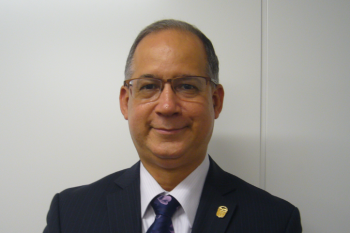Events
Panamanian Service Industry Driven by Panama Canal Expansion
—- Would you talk about how Panama became independent from Spain, Colombia and the United States?
In 1821, Panama became independent from the Spanish viceroyalty of Nueva Granada, and joined Gran Colombia which included Venezuela, Colombia, and Ecuador. Although Venezuela and Ecuador became independent in 1830, Panama remained in Gran Colombia. Subsequently, when Colombia rejected the treaty it was negotiating with the United States for the construction of the Panama Canal, Panama declared independence from Colombia in 1903 with the support from the U.S. And we immediately signed the treaty with the U.S., and also started fighting for changes to make the treaty fair for Panama. This continued until 1999 when we took the full control of the Panama Canal back from the U.S., which we consider to be our “independence for the 3rd time”. Since then, we are efficiently managing the canal as a commercial entity. The canal expansion project was completed in 2016, which doubled the canal’s capacity. Since the return of the control of the canal, Panama has been maintaining a peaceful and cooperative relationship with the United States.
—- About 80% of Panama’s economy consists of service industries developed mainly by Panama Canal management relay trade, finance, tourism, etc.What is your prospect of the Panama economy in the future?
The canal management is not our largest industry; and tourism tends to produce more revenues than the canal’s toll revenue. Logistics is another important industry. The Tocumen International Airport, which is the most connected airport in Latin America, will be expanded next year, and the traffic of transit passengers is expected to be doubled. Panama has two major infrastructure projects: Line 3 of the Metro transit system and the 4th bridge over the Panama Canal. The former project is in cooperation with Japan, and the latter is with China. We also inaugurated the first LNG terminal in August. And Japan will benefit from it a lot because the country has LNG concessions in the United States. Although the economic growth is predicted to decrease to 4% this year, the Panamanian economy will continue to grow in the next 5 to 10 years. Our current challenges are to strengthen the manufacturing industries, revive the agricultural sector, and training workers to be bilingual.
—- Japan is a major user of the Panama Canal and has deep economic relations with Panama through the ship registry.As Ambassador to Japan, which areas would you like to focus your efforts for reinforcing the good bilateral ties?
I focus on exchanges in education and culture, and between small and medium enterprises. I bring in students from University of Panama and Technological University of Panama for training in the technology of controlled environment agriculture at the plant factories of Chiba University and for studying the Japanese language and culture. Japanese students will be able to come to Panama, enjoy our stress-free life, and learn the Spanish language. This way, students of both countries can get to know different cultures and reassess their lifestyles. The Panamanian people love Japanese robotics, anime, and drone technology. A project at this embassy is to organize business people including Latin American immigrants in order to provide export- and investment-related advice to Japanese smaller businesses that are not so capable of communicating in Spanish, and encourage exchanges between Japanese and Latin American smaller enterprises.
—- Panama established diplomatic relations with China last year and plans to negotiate a free trade agreement this year. What kind of relationship does Panama expect to build with China?
I expect China to do business with transparency and respect the rules of Panama, and I hope for a fair and mutually beneficial relationship with them. I believe China can benefit a lot from Panama, just like the Japanese and Korean businesses have done. Panama already has 25agreements signed with China, and is advancing a cooperative relationship in the areas of economy, aviation, banking, logistics, and tourism. China takes the most advantage of the Colon Free Zone, exporting Chinese goods to various parts of Latin America and making significant investments in container terminals.
—- In the wake of Panama Papers leaks from a Panamanian law firm in 2016, how has the Panama government responded?
The Panamanian government was already taking steps to standardize our financial systems in line with the OECD international standards. Our first response right after the incident was to negotiate the first tax information exchange agreement with Japan, and then with Singapore and Germany. We are also part of the multilateral automatic tax information exchange of agreement which will enter into force next year. Panama cooperates with the global society in prevention of tax evasion, but there are countries that put Panama in their discriminatory list as tax havens. So, we put those countries in our own list to take appropriate actions against them. Financial institutions in Panama follow the law and check the origin of the customers’ funds in a fair manner, and acts of tax evasion will be severely punished. Panama has a long history of vessel registration; and many legislative factors such as ease of starting a business, low corporate tax rates, and acceptance of foreign workers make us attractive to foreign corporations and have been the basis for our economic development. Panama is maintaining its credibility and good reputation.
(Interview by Shu Tamaru, FEC Counsellor)
